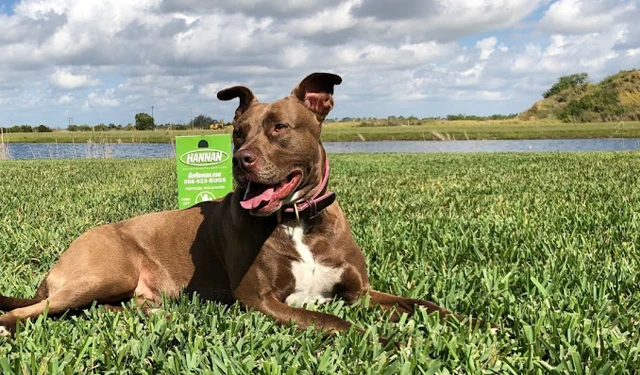Bigheaded Ant Overview & Quick Facts
Keep ants out of your home or business with
effective identification and control strategies.

A Closer Look at Bigheaded Ants
The bigheaded ant gets its name from the disproportionately large heads of its soldier caste, which look almost cartoonish compared to their bodies. While they may seem small and unassuming, these ants can become a serious structural and nuisance pest, especially in warm, humid climates like Florida.
🔍 What Makes Them Unique?
Bigheaded ants have a two-caste system:
-
Minor workers (small heads): Handle daily tasks like foraging
-
Major workers (soldiers): Have huge heads and strong mandibles, used for defense and seed-crushing
This species is also known for building underground nests and displacing native ants, making them a problematic invasive species.
🐜 What Do They Look Like?
-
Color: Light brown to reddish-brown
-
Size:
-
Minor workers: 1.5–2 mm
-
Major workers (soldiers): 2.5–3 mm, with massive heads
-
-
Body features:
-
Two-segmented waist
-
Uneven thorax
-
No stinger, but they can bite
-
🏠 Where Do They Live?
Bigheaded ants prefer:
-
Warm, moist climates (very common in the southern U.S.)
-
Nesting in soil, under logs, in mulch, beneath sidewalks, or near foundations
-
Indoors, they may be seen near baseboards, kitchens, bathrooms, or inside walls
Their colonies are often hidden, but their trails of foragers give them away.
⚠️ Why Are They a Problem?
Bigheaded ants:
-
Can invade homes in large numbers
-
Often nest close to structures, causing structural concerns
-
Displace native ant species, harming local biodiversity
-
May be mistaken for other ants like fire ants or ghost ants
They are also hard to manage because their nests can split into subcolonies, making control more complicated.
🍽️ What Do Bigheaded Ants Eat?
-
Sugary substances like honeydew, nectar, and sweets
-
Proteins including dead insects and food scraps
-
Seeds and grains — their powerful jaws let soldiers crush them with ease
🧠 Fun Fact!
Bigheaded ants are so successful as invaders because of their ability to form satellite colonies, allowing them to spread rapidly. Plus, the soldier ants’ large heads make them look like they’re wearing helmets!
Frequently Asked Questions
About Bigheaded Ants
Why are they called "Bigheaded" ants?
Bigheaded ants get their name from the major worker ants (soldiers), which have massive, oversized heads compared to their bodies. These powerful jaws help with defense and crushing seeds.
What do Bigheaded ants look like?
-
Color: Light brown to reddish-brown
-
Size:
-
Minor workers: 1.5–2 mm
-
Major workers (soldiers): 2.5–3 mm
-
-
Features:
-
Two-node waist
-
Uneven thorax
-
No stinger, but they can bite
-
The difference in head size between minors and majors is the easiest way to ID them.
Where are Bigheaded ants commonly found?
-
Outdoors: Nest in soil, under logs, rocks, mulch, pavement cracks, or foundation edges
-
Indoors: May forage into homes for food and water, especially near baseboards, kitchens, and bathrooms
-
Thrive in moist, warm climates like Florida and the southeastern U.S.
Do Bigheaded ants bite or sting?
-
They do not sting
-
They can bite, especially the large-headed soldier caste
-
Bites are not harmful to humans or pets, just a mild annoyance
Are Bigheaded ants dangerous?
While not dangerous to humans, they are considered nuisance and structural pests because they:
-
Invade homes in large numbers
-
Can nest near foundations
-
Displace native ants and disrupt ecosystems
-
Are difficult to control due to subcolony formation
What do Bigheaded ants eat?
-
They are omnivores and eat:
-
Sweets (syrup, honeydew, sugary foods)
-
Proteins (insects, meats, pet food)
-
Seeds and grains — soldiers crush them easily
They often farm aphids for honeydew, which can also harm garden plants.
-
How do I know if I have a Bigheaded ant infestation?
Signs include:
-
Trails of ants around your foundation, driveway, or indoors
-
Soil mounds or nesting activity near patios or walkways
-
Seeing both tiny workers and larger ants with big heads together
How can I get rid of Bigheaded ants?
-
Seal entry points around your home
-
Eliminate moisture and food sources
-
Do not disturb nests — it can cause the colony to split
-
Contact a pest control professional for proper baiting and treatment
Their ability to form satellite colonies makes DIY control difficult.
Struggling with ants in your home, yard, or business? Hannan Environmental Services offers expert ant control and prevention throughout South Florida. Our trained technicians provide safe, effective, and long-lasting solutions to keep your home pest-free. Contact us today for reliable service you can trust! Feel free to also reach out to Hannan Environmental Services on Facebook!

